The Learning Zone
"Learning is a treasure that will follow its owner everywhere." - Chinese Proverb

The Learning Zone
"Learning is a treasure that will follow its owner everywhere." - Chinese Proverb
"Coming together is the beginning, staying together is progress,
and working together is success." - Henry Ford
A recount is a form of writing that retells an event or experience. Students learn to list and describe past experiences by retelling events in the order in which they happened (chronological order). Recounts are written to retell events with the purpose of either informing and/or entertaining their audience. Kindergarten students recently completed a writing unit focussed on recounts and one of the tasks was to write a personal recount of their year. One completed sample is presented below showing the events of the year in chronological order. Well done, Oliver, on your excellent summary of the 2023 school year!
This Year
This year I started school at St Joseph's School. In Term 1 we met Miss George. In Term 2 we did athletics with Adam. In Term 3 we met Miss Salas. In Term 4 we learnt about time.
By Oliver Bowen - Kindergarten
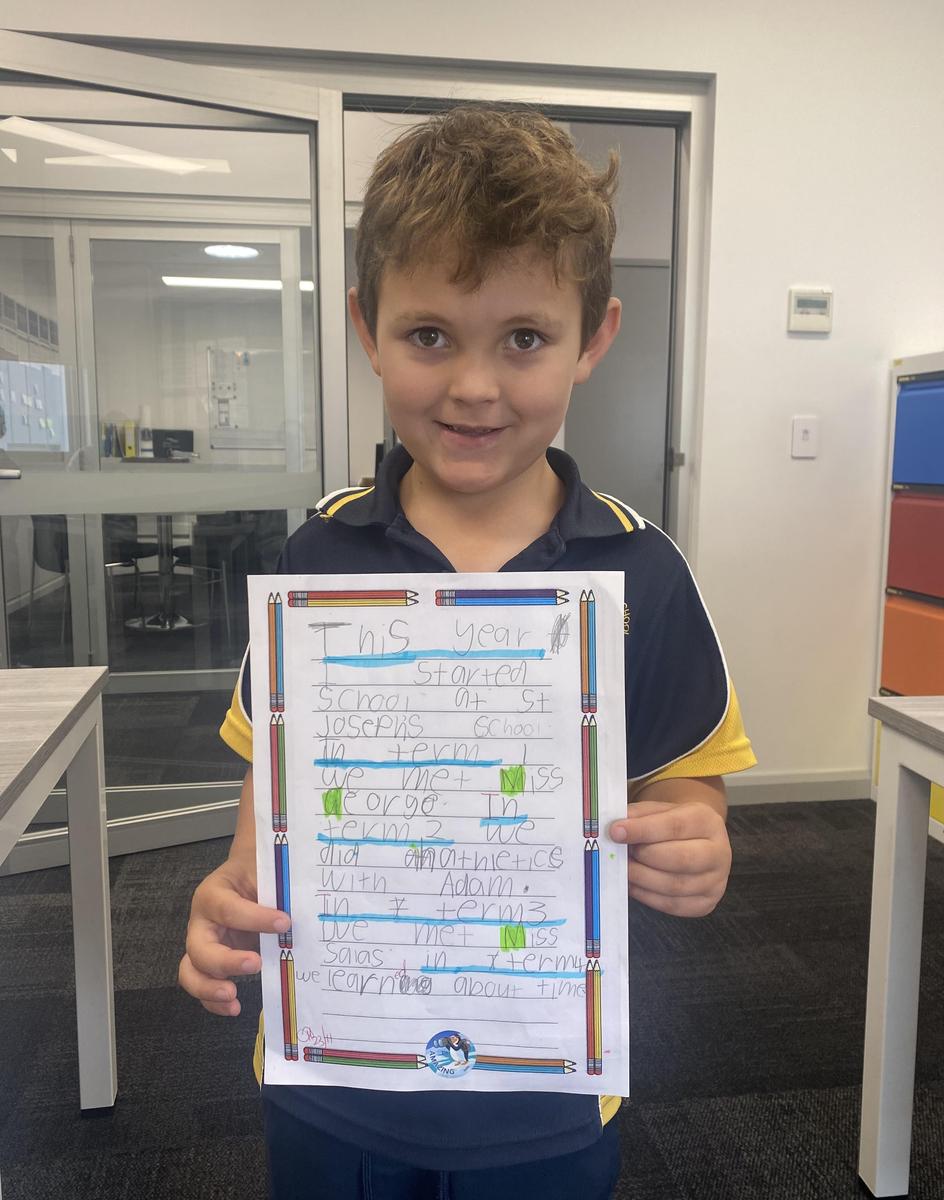
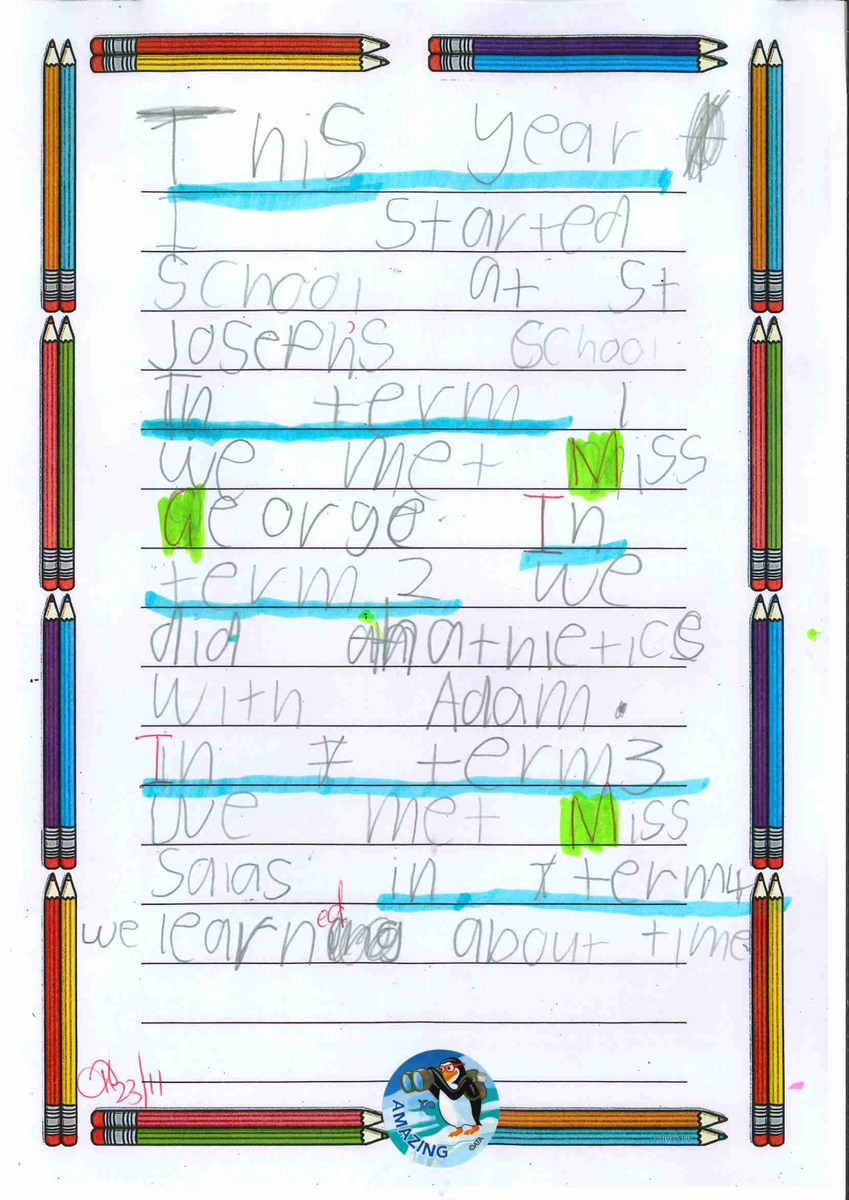


What is happening in the world of mathematics at St Joseph's? Let's take a look!
Please see the information below to assist your child at home or to see what they have been doing so far this term.
Tricky number warm-ups in Stage 2.
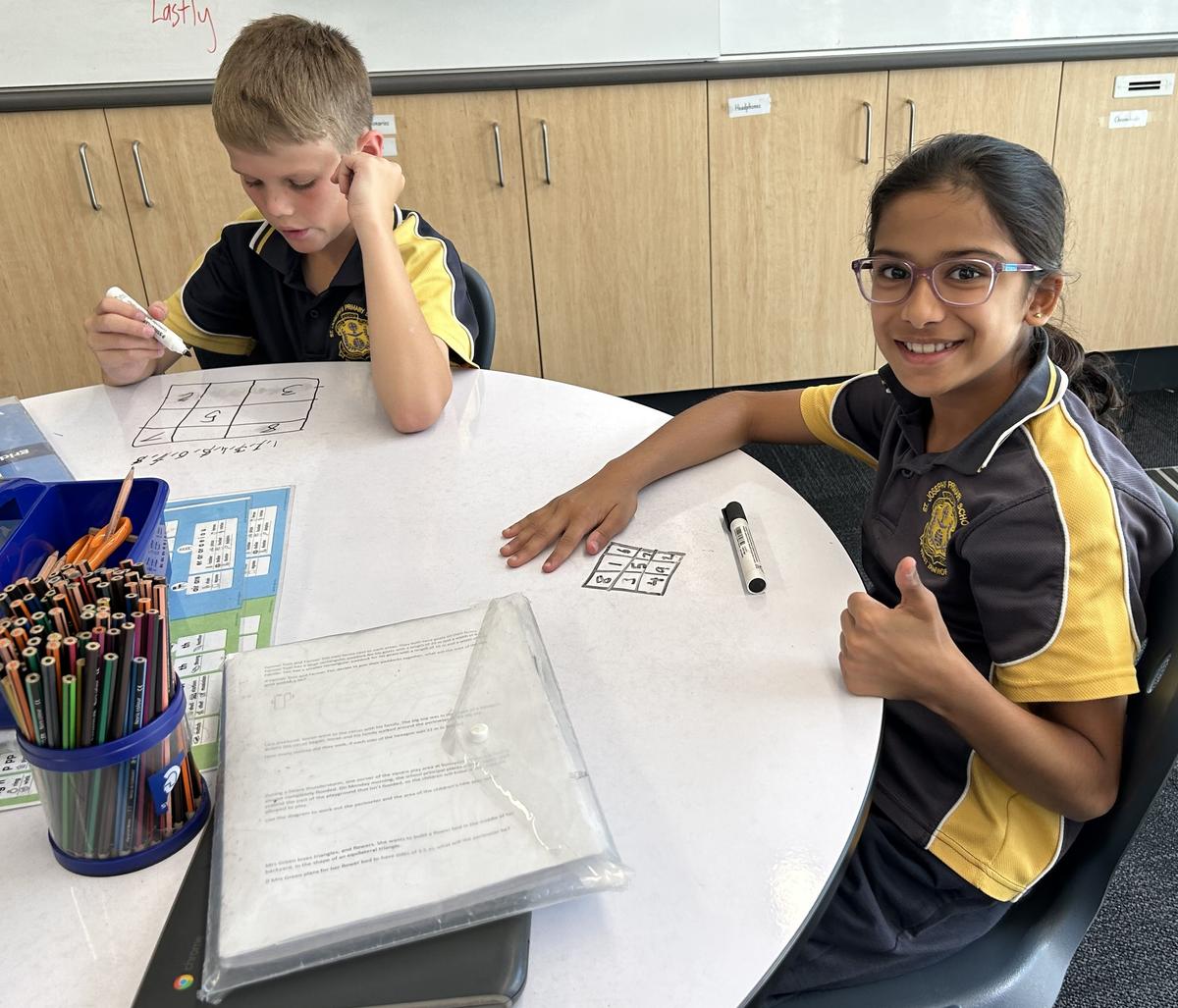

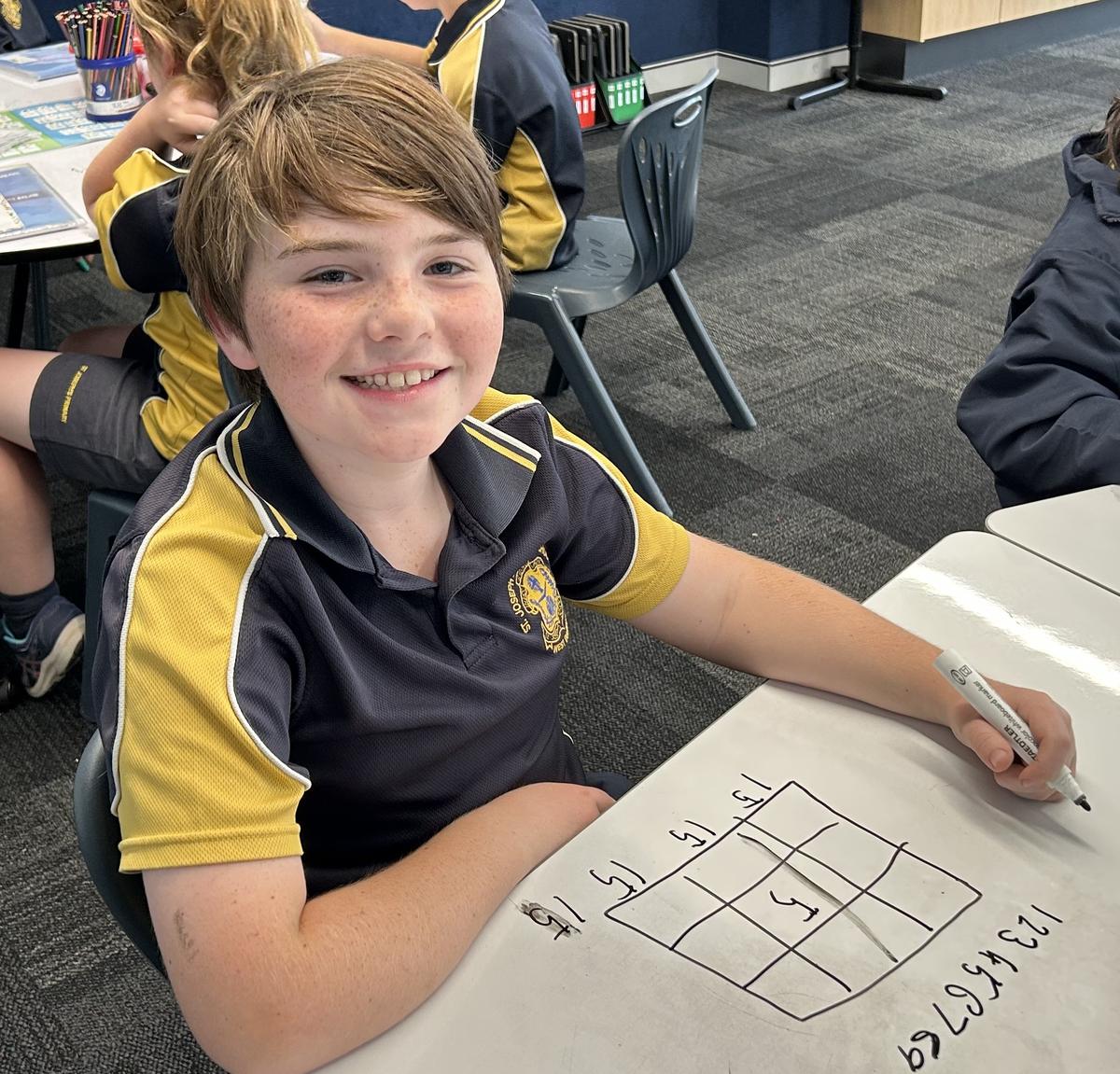

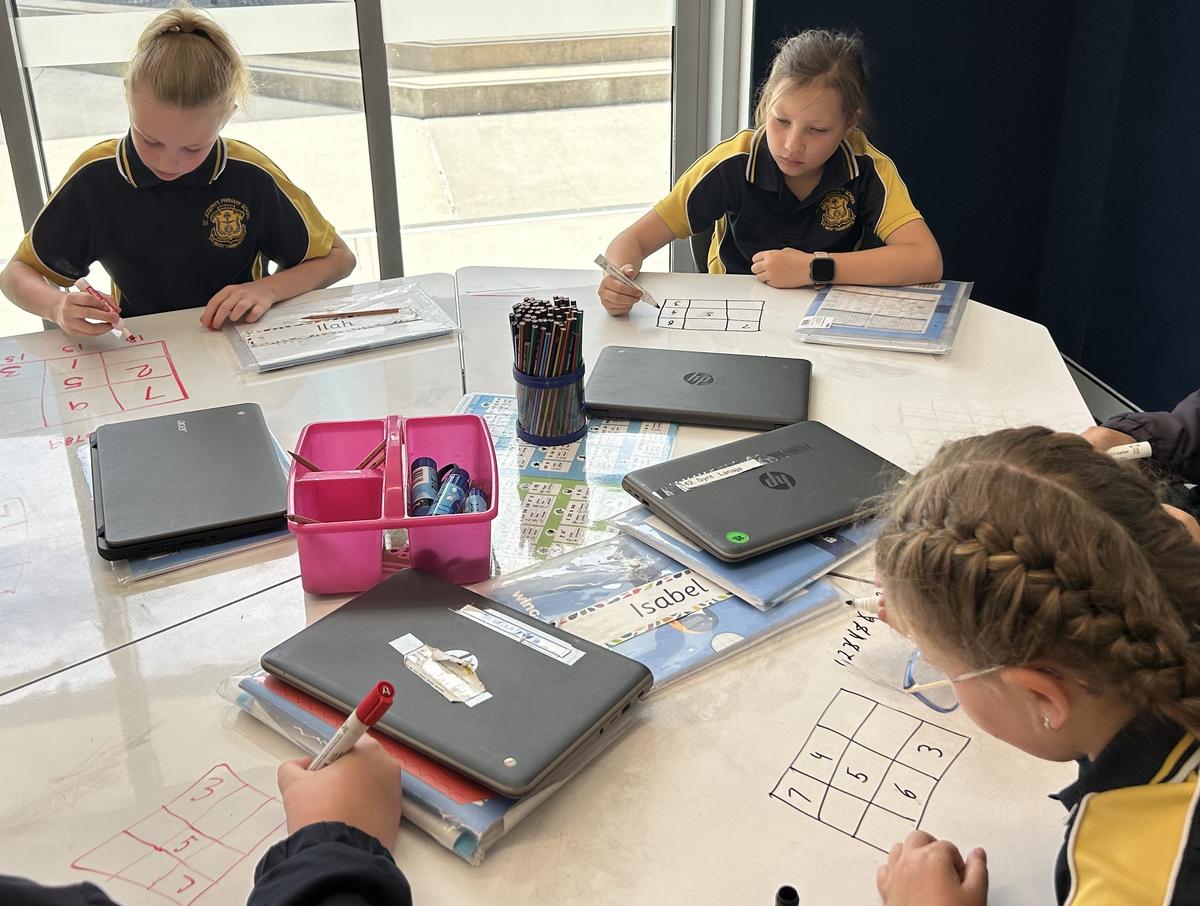

Problem solving in Kindergarten. Thank you Nina for displaying your thinking and explaining how you solved the problems listed below that were in our previous newsletter.
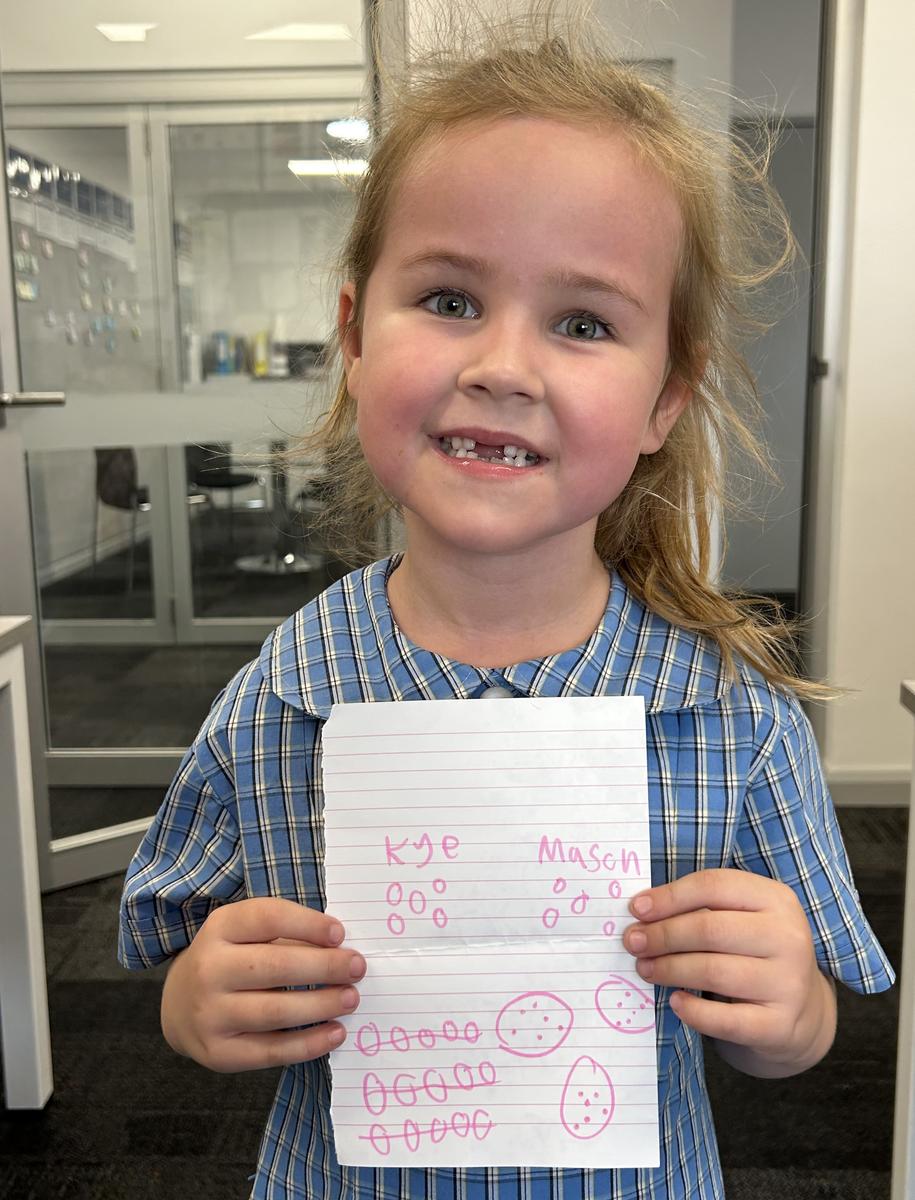

Kye had 10 jelly beans and he shared them equally with Mason. How many jelly beans did each boy receive?
Bridie is making necklaces with beads. She has 15 beads and wants to put 5 beads on each necklace.
How many necklaces will she make?
Roman had 18 cards. He gave two friends and himself an equal share so that they could all play a card game.
How many cards did they each receive?
Maths At Home:
Kindergarten - Time
Start making a habit of pointing out the time on a clock when events happen in your day, to introduce what that time looks like. Move on to asking your child to tell you what a certain time looks like: “What will the clock look like at 1 o’clock” (or more tricky “in 30/15 minutes” if they are able to!) or “when it’s time to play?”
🕐 Once these basics are established, let your children remind you when it is time to do something…You may well find that they will pick this up especially easily if it’s something they’re really looking forward to, perhaps not so quickly if you’ve asked to be reminded when it’s time for bed!
🕐 Use both digital and analog clocks around the house.
Stage 1 - Volume
Stage 1 are currently working on Volume. Lots of fun activities are taking place in this unit of work.
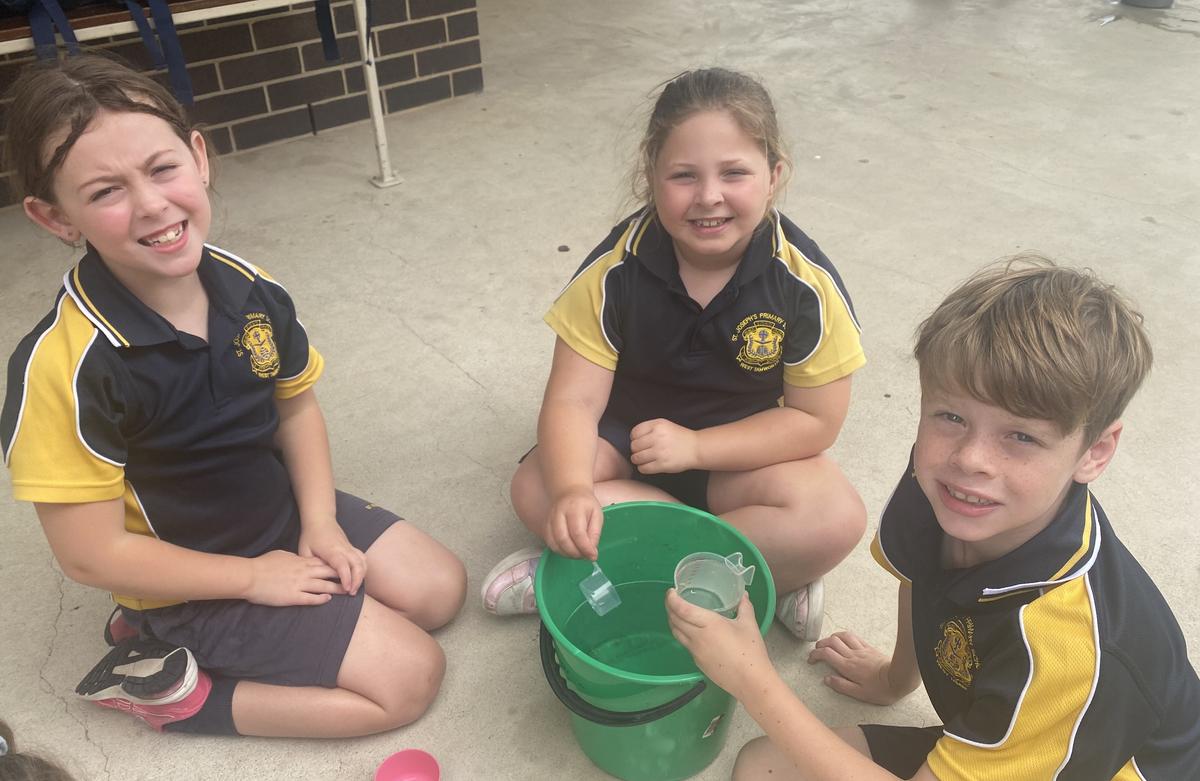

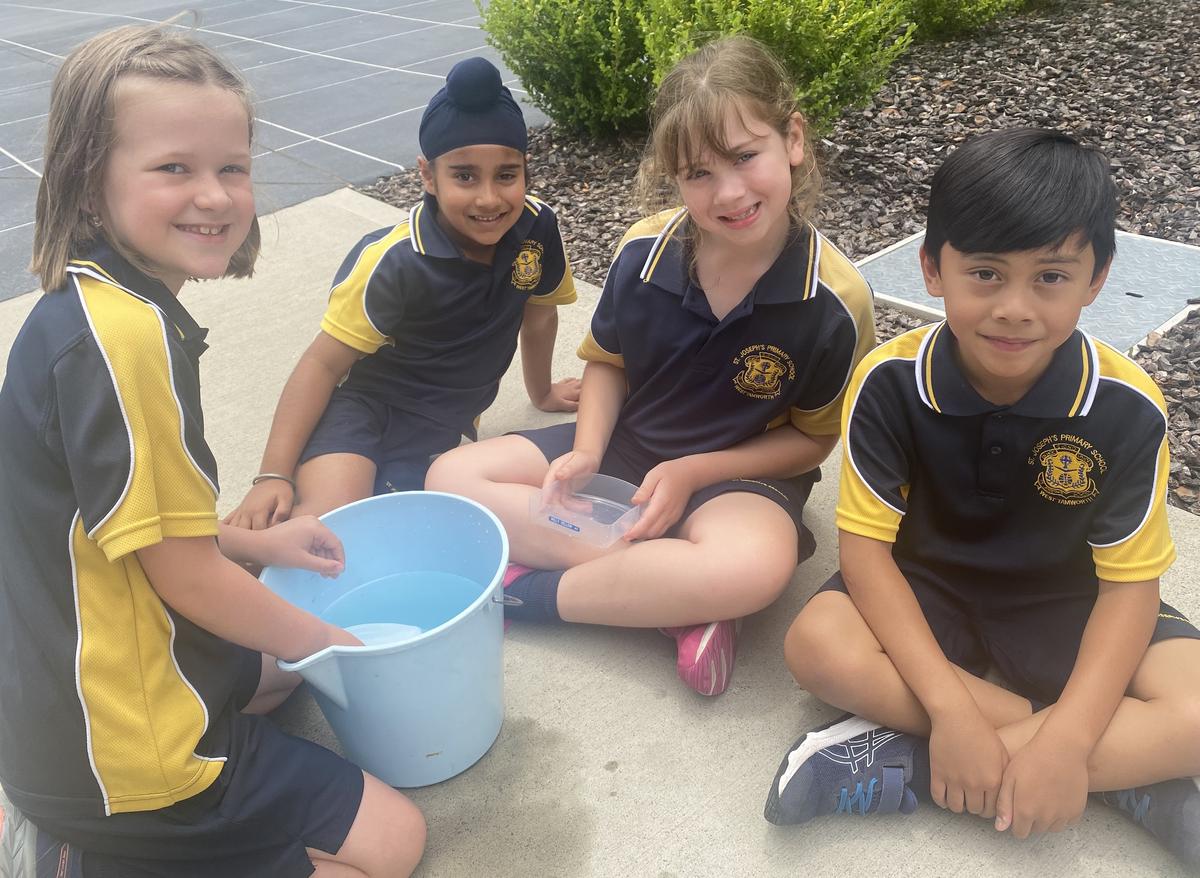

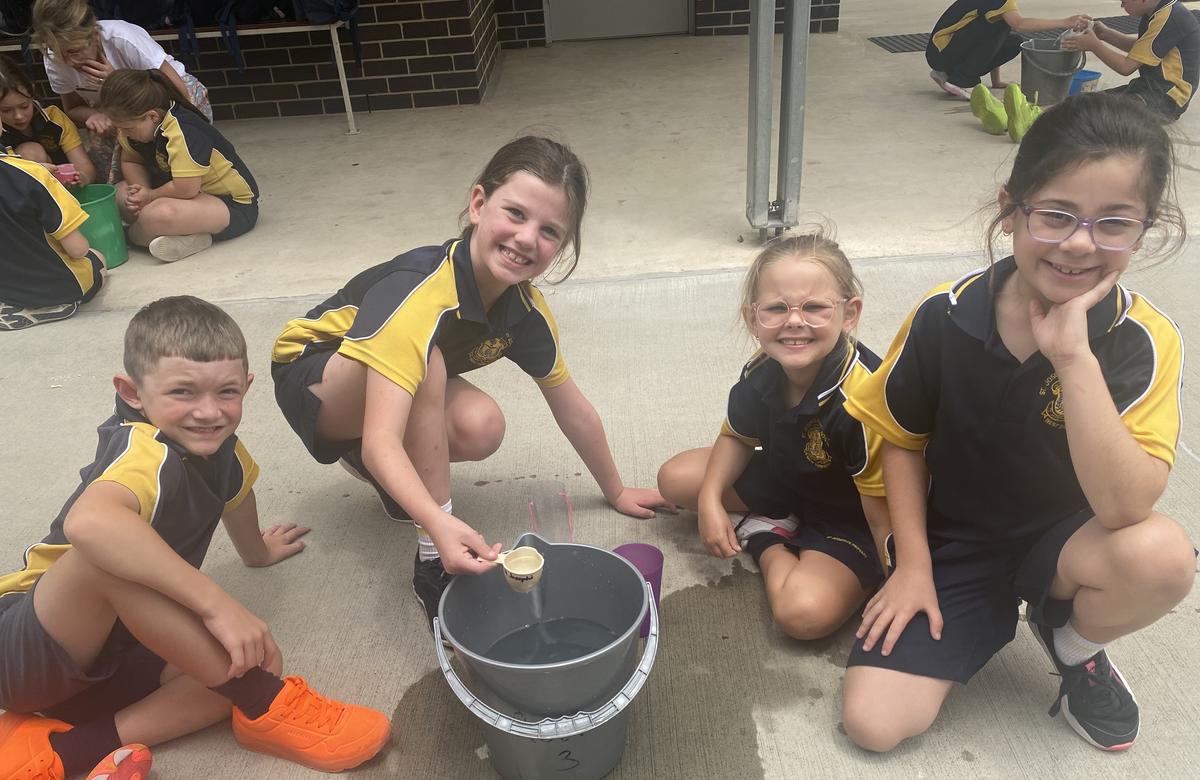

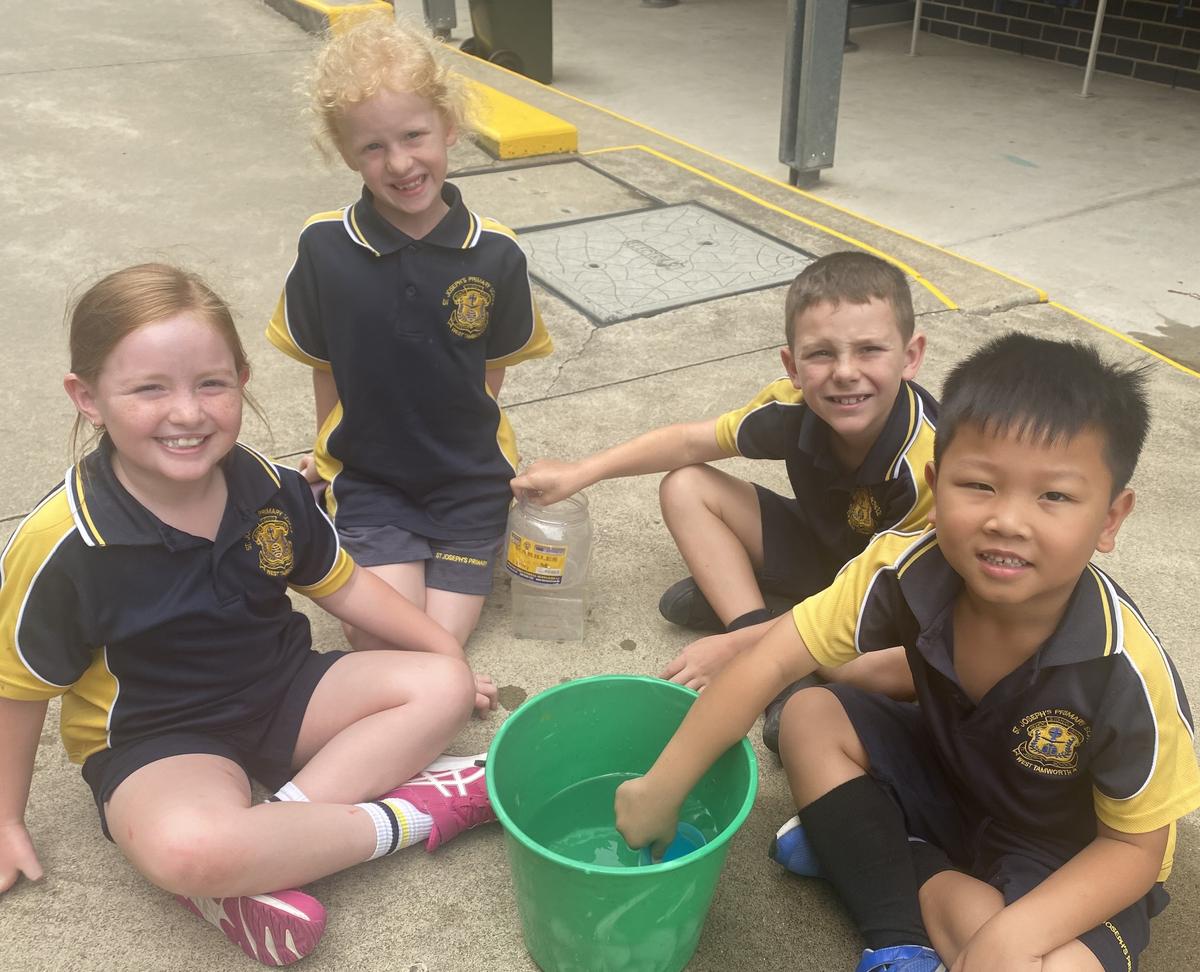

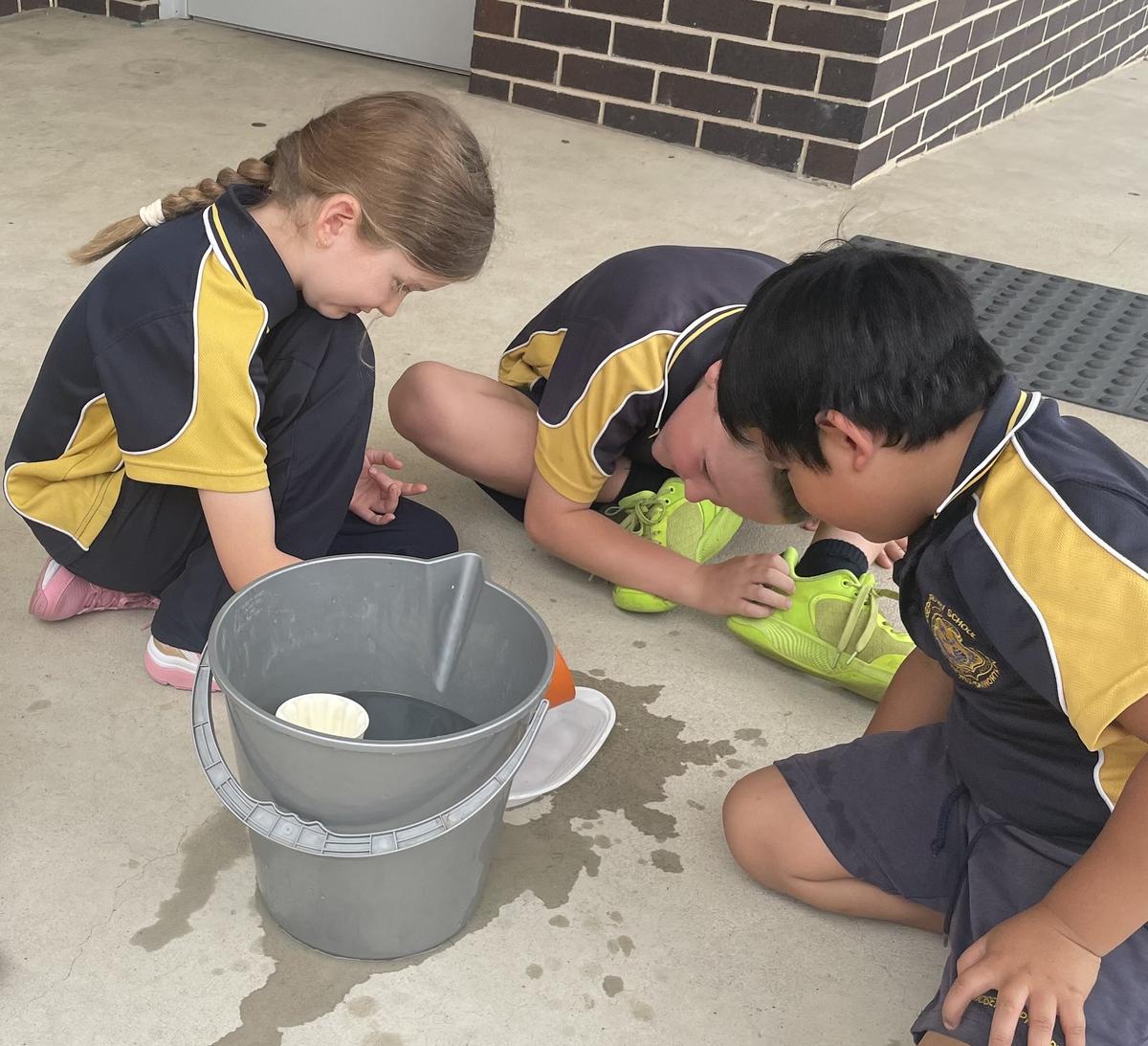

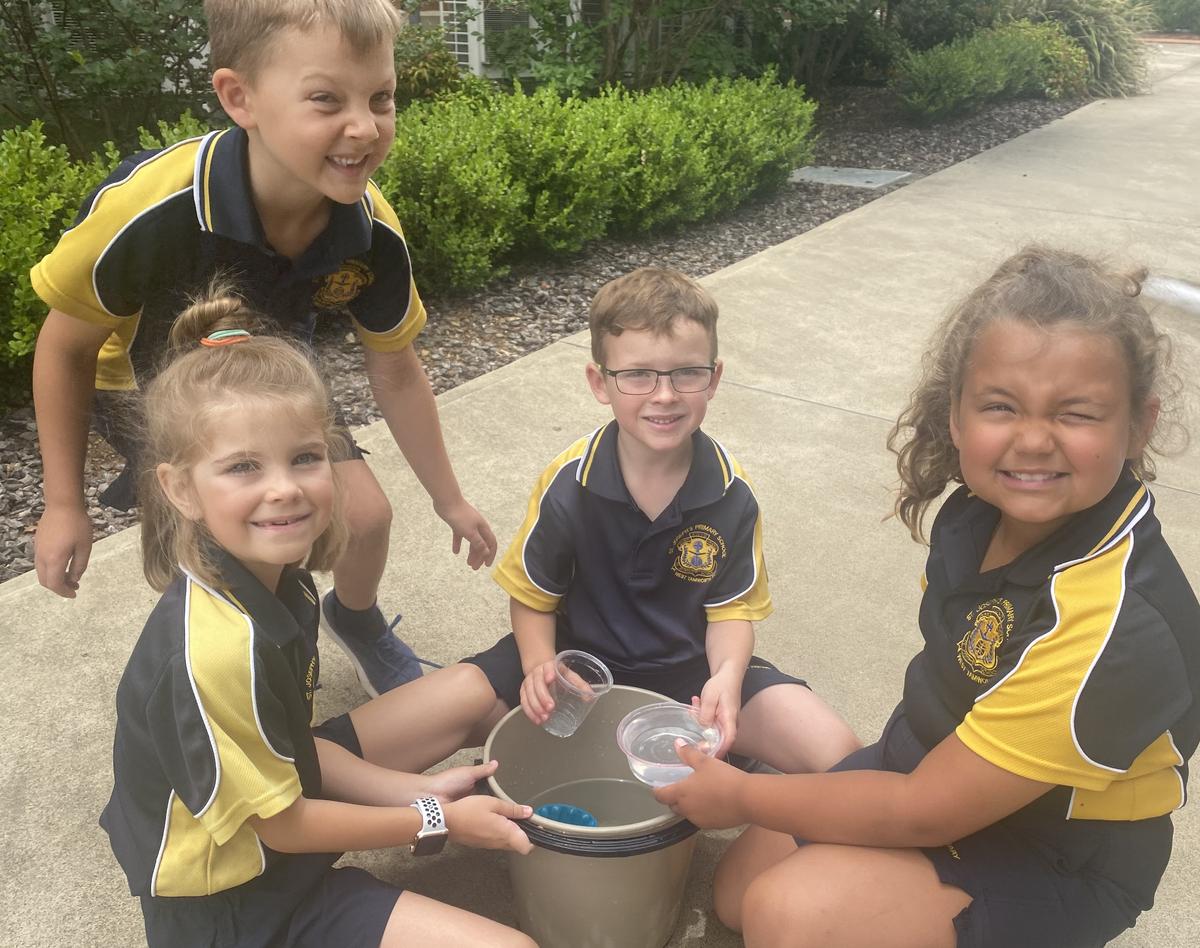

Stage 2 - Money
Stage 2 are working on the concept of Money. Show your child two sets of coins. Begin with simple sets at first. For example, one set may contain a 10 cent coin, a 5 cent coin and a fifty cent coin. The second set could have two 10 cent coins, a twenty cent coin and a 5 cent coin.
Ask them to identify which set is worth more. Give them time to explain their choice. This quick mental exercise helps to promote the everyday thinking involved when calculating change or adding coins when counting coins.
As a follow-up, provide your child with a monetary amount. For example, $2.25. Ask them to add various coins to create the given total. Discuss with your child the most efficient ways to add or group coins to make their given amount. For example, if something costs 50 cents, would you use ten 5 cent coins or is there a simpler way? Discuss the different ways to make 50 cents.
Stage 3 - Patterns and Algebra
Stage 3 are beginning a unit of work on Patterns and Algebra.
Encourage your child to count and recognise patterns in the environment by discussing what they see. Have your child look for patterns on buildings, rugs, floors, and clothing - describe the pattern. Can they make a number sentence to match the pattern?
Ask your child how many different ways they can show a specific number, say, 18 (they might say 16 + 2, 19 – 1, 10 + 7 + 1)
Have a great week of learning and fun!
Maree Holland & Greg O'Toole